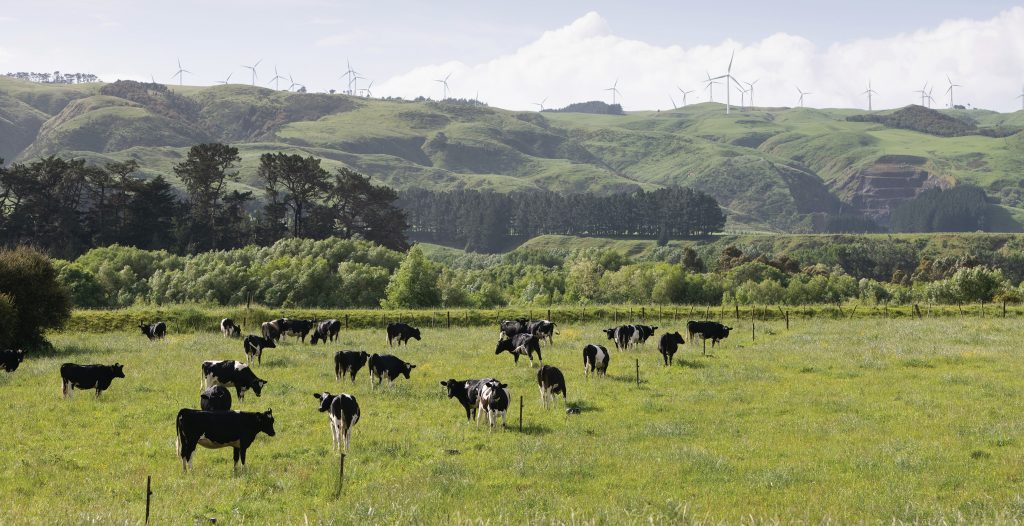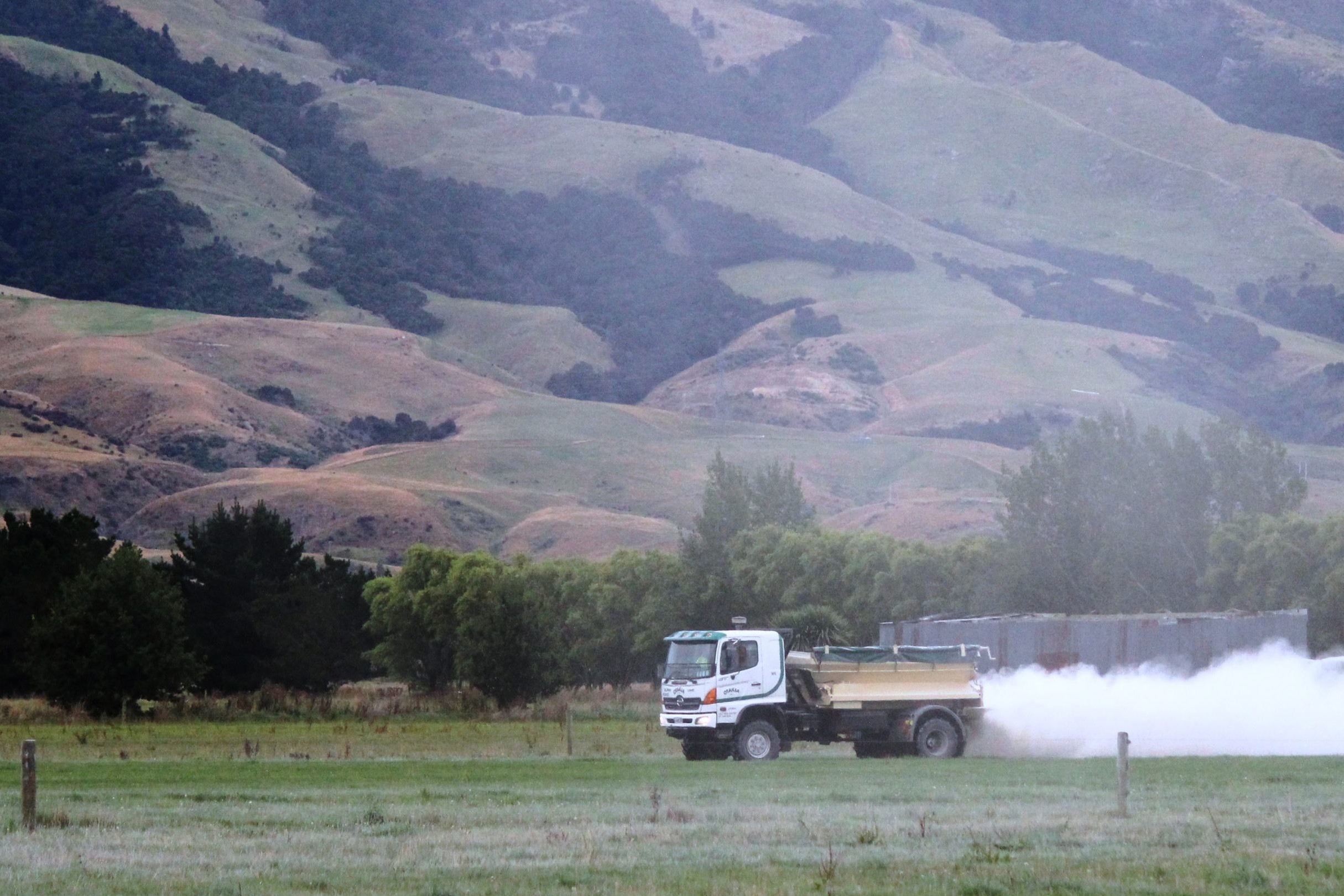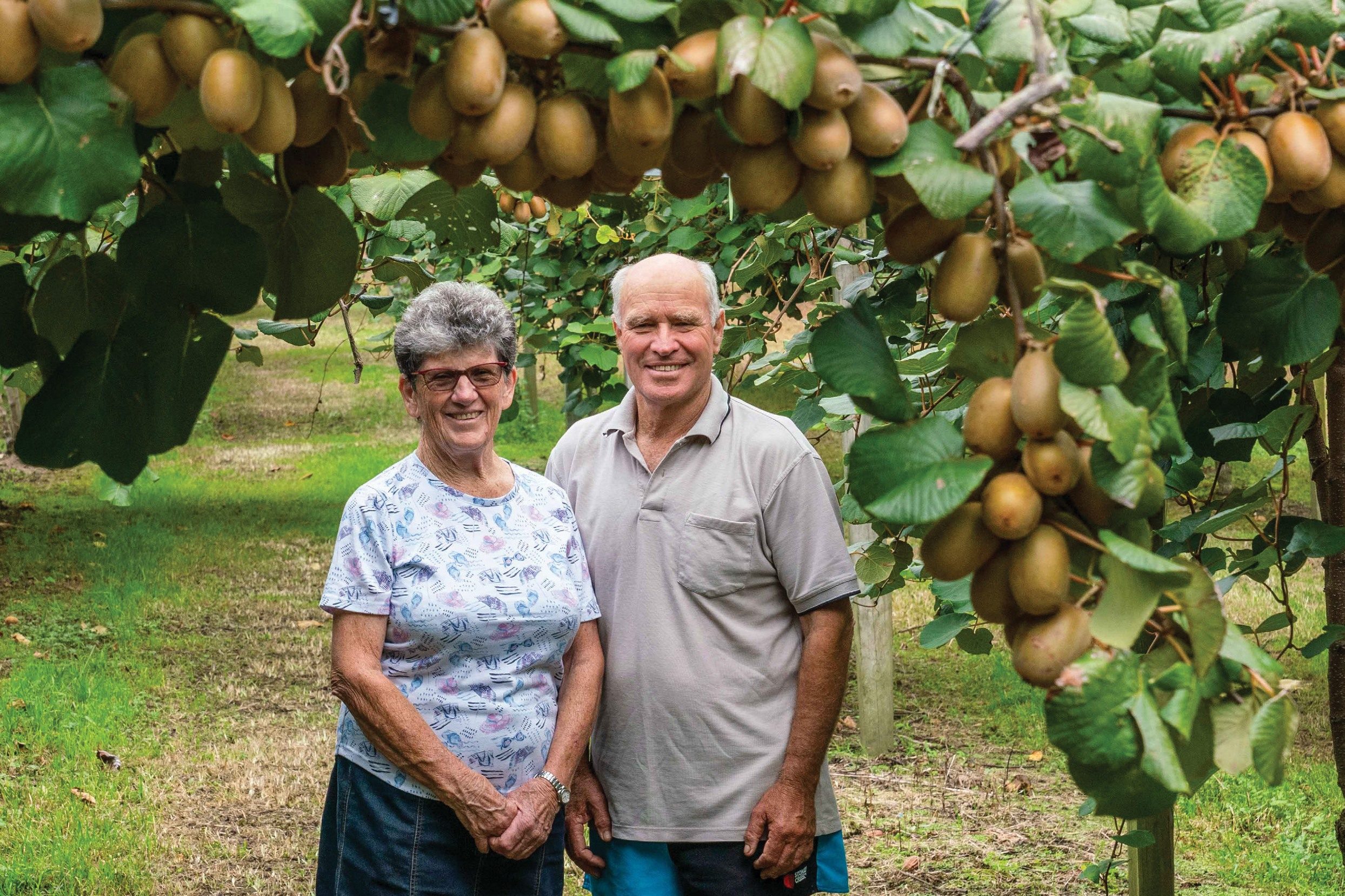Keeping the heifers growing and the owners happy is at the heart of a Manawatu contract heifer-raising operation. By Jackie Harrigan.
Ed Jackson is a former dairy farmer now dairy heifer grazier, and he has kept a lot of his old dairy farming tricks to maximise growth and make sure his young charges reach their targets.
As a grazier he is just one cog in the wheel of getting the heifers to the stage of productive cows, he says, and the growth journey starts on day one in the calf shed.
“If you send me something that’s too small and it’s then impossible for me to grow it to 500kg – I only have 365 days on a May-to-May grazing contract.”
Ed ran the participants at a recent SMASH South Taranaki heifer grazing day through the how and when of his operation and keeping the heifers growing and the owners happy on his Manawatu operation where he runs 300 R2 heifers on May-May contracts and a handful of steers and weaner heifers. Ed grazes calves through Vet Care (Wanganui Vet Services) and for a handful of private clients and says the target for most of the heifers to arrive is 220-250kg on May 1.
Targets are important, Ed says.
“The grazing journey is a matter of hitting all the small steps on the way through – if you hit all the targets, you will get to the main target – and if they meet the main target they won’t fall out of the system at three years of age.”
“If you send me animals under their start weight I will struggle to get them to the finish weight – I only have 365 days.”
Too many heifers are falling out of the national herd at age three, when they fail to rebreed because they are not grown well enough, Ed says.
“Why are so many farmers rearing 20-25% replacements? It should be down at 18% and if the heifers go home at their target of 450 or 500kg then they won’t need to be still growing as an in-calf two year old when they don’t rebreed and then drop out of the herd.”
Pasture basics: once a dairy farmer
“The basics are to feed anyone else’s stock like you are milking cows and so it’s imperative to have high ME grass,” Ed told the crowd.
“We don’t expect them to do any cleaning up – and we don’t push the post-grazing residual down past 1500kg drymatter (DM)/ha.
“You can’t ignore winter and then think you will catch up the growth rate – you will never catch it up.
“Even if you are doing 1.2kg liveweight gain (LWG)/day at the moment (late spring) but if you have only done 0.3kg LWG/day during the winter, you will never catch that up.”
“This winter was the hardest we have had in the Manawatu, and we were down to 0.6-0.7kg LWG/day.”
But, he says he can’t count on the summer as grass quality drops off so the heifers need to be putting on weight the whole way through. Planning is crucial, he said, managing the grass by setting the round lengths.
“In winter I plan out the whole year – starting at the spring rotation planner in spring – planning how I will get to balance date?”
He plans for 90 days’ rotation through the winter, then enacts the spring rotation planner, down to a 20-day round in November, pushing out to 40 days in December and then 50 days over January-February.
Trace minerals:On everything that arrives on the farm: a B12 as they arrive, a selenium shot, and all the way through, Cu if they come from a low area, is Ed’s ‘minerals mantra’.
“Do the basics right and they will put weight on.”
Parasite control:
“I am not a fan of drenching religiously, it’s a task that shouldn’t be done,” Ed says.
A basic quarantine drench as each mob arrives is obviously important and then it’s done on a needs basis.
Ed uses oral drenches until the heifers get too big to hold, and then moves to pour-on products.
“After mating the heifers only get a pour-on treatment if they have a grubby tail or are not meeting weight gains.”
He went on to tell the crowd that his most important piece of kit is a weigh scale that tracks daily weight gain (DWG) or loss from the last weighing – so that while the heifer is on the weigh scales he can be proactive and draft her out for treatment.
“For every animal we need to know if she is ahead of target or behind target for her – because it depends on her breeding.
“We can only manage what we measure, I need good data like DWG since the last weighing to think “ am I drafting her out” on the spot?
“Then I can decide whether she needs a vet, bloods taken or does she have a shitty tail and just needs a pour-on?
“If I don’t get instant DWG data I have to go home, download the data, make the comparison, and then go back and find her, separate her and treat her – it’s too hard.
“Get some weigh scales that tell you the weight gain – it’s the best investment I have ever made – better than buying drench.”
Mating:
Ed says it’s all about good bull management, and that the bulls must be inspected as sound.
“I don’t want big teams of bulls, no more than four in a group or you tend to get dominant bulls that bully the others.”
For bigger mobs you need to rotate the bulls and watch them for dominance also.
Biosecurity:
Ed runs more than 300 heifers on his farm and has it planned out so that there are never mobs beside each other and different mobs never able to contact each other over the fence.
“Each mob has a specific area of the farm and are all run separately.”
Charging schedule:
For Ed’s grazing services, all costs are included like drenches and animal health, as he says that way he knows what the animals are getting. He charges a flat weekly rate of $3.60/head for maintenance plus a weekly price per kg weight gain of $2.25/kg.
“The weight gain basis is the fairest system to charge,” Ed says, “but you have to weigh regularly.”
He tends to weigh everything every six weeks, and at least, on arrival, mid-winter, pre-mating and pregnant weight. The heifers he grazes for VetCare are weighed seven times each year.
So depending on growth rates, the heifers charged from $12.50 to $17.50 per week.
The mob he grazed from December as weaners and then weighed 253kg at May 1 were charged for a DWG of 0.69kg/day and by putting on 257kg by May 1 finished at the target of 510kg and were the cheapest to graze, Ed says.
In contrast the mob that came on at 175kg and added 295kg, end up at 470kg on May 1 but with a DWG of 0.81kg/day were the most expensive. (Both groups had a finish target of 500kg).
Targets:
Choosing the target based on the specific breeding of the animal is the only way to set the end target, Ed says.
“It depends on the genetics – you need to look at the figures of the mature weight of that breed, cross and % of purebred – as a grazier you need to know.”
Ed also warned farmers present against keeping the heifer calves from their later calving cows, saying they will struggle to reach targets and won’t be in the herd as three year olds as they will not rebreed successfully.
Breed-specific target weights
Steve Forsman from LIC also addressed the issue of liveweight targets, saying some farmers are not targeting the right weights for their weaner heifers and will be undergrowing them because of that.
The target live weights for planned start of mating and May 1 are influenced by the genetics of each animal.
All animals have breeding values (BV) for multiple traits inherited from their parents, and one of the more highly heritable traits is liveweight, Steve says.
Crossbreds average estimated mature liveweight (MLW) used to be quantified as a fixed figure of 450kg, but in recent times the industry started using the breeding value for LWT added to a base of 500kg because of the huge variety that exists in the Kiwi cross animal. This was when the BV was around zero BV(0) + 500kg = 500kg, but Steve says the calculations for BVs are changing and the 2022 born BV for LWT is 9kg so BV (9kg) + 500kg = Crossbred MLV 509kg average.
Friesian and Jersey targets have changed too, and farmers should be thinking about that when they inform their grazier of what weight they want the animals to grow to by the time they come home for calving.
‘There can be nearly as much variation within the breed as there is across breeds these days, and you can get a 100kg difference between a ¾ Friesian and a ¾ Jersey.
“So it can be misleading to simply use breed as the marker for growth rates for the grazier.
“Every animal has its own estimated mature liveweight based on its LWT breeding value, therefore it has its own target weights and its own guideline set as MINDA targets for heifers.
“Farmers can find these BVs for each animal on their MINDA records and add to 500 to get the mature live weights guide for that group of animals.
“You could very quickly make up a custom report based on the two-year-old group and add the LWT BV attribute to that which you can export as a .csv file and add a 500 to that figure,” he says.
“Alternatively there is a file available in the Manage Animals section of MINDA-Weights that they use in MINDA and as long as they have recorded two or more weights that file contains the PSM target which can be divided by 0.6 which would render the full estimated mature LWT figure.”
These industry targets are used commonly around the world because growth of the animal and therefore the weight determines the start of puberty for the heifers and farmers need them to be cycling before the planned start of mating.
The target is to be at 20% of mature liveweight (MLW) at three months, 60% at planned start of mating (15 months) and at 90% of MLW at 22 months.
“The MINDA weights guideline is just that – a guideline that runs through these target weights – a bit like your kids’ Plunket weight gain line,” Steve says.
“It’s not just about putting on weight – it’s actually consistently growing good heifers and using liveweight to monitor it.”
“It can get out of whack – if you have a hard winter and the animals’ growth is compromised for a long period, you might be able to pile weight on them quite quickly but you can’t make them grow up faster to compensate.”
What’s it worth?
It is estimated that cows produce 2kg milksolids (MS) less for every 1kg under their 22-month target liveweight.
In an earlier large heifer study, Steve says, 70% of heifers were on average 11% under their 22-month target.
“That’s millions of dollars of milk not going into the vat because the heifers were undergrown and still trying to catch up on their growth.”
Steve suggests getting the grazier to import the weight data into MINDA-Weights or sending the owner the weigh session files to load in if they don’t have data entry permission to MINDA and then the weights can be compared against regional or national trends.
10-point list
Ian Wickham has had 50 years in the dairy industry and has cared for more than a million heifers since establishing the NZ Grazing Company in 1987. He spoke on working together and building strong grazier/owner relationships. He gave dairy farmers a 10-point list:
- Define your expectations then find the best grower or owner who will endeavour to meet your expectations.
- Document the details of the arrangements you have agreed on.
- Measure and record all events relating to the animals.
- Benchmark and review progress against those benchmarks – the more often the better.
- Communicate regularly and meaningfully.
- Prepare to hold to account any poor performance.
- Reward and recognise good performance fairly.
- Plan to have a successful herd entry for first lactation heifers. They are likely to be the highest genetic merit group in your herd and also the largest group by age.
- Audit and verify your results against what you planned to achieve. Pregnancy results/first lactation milksolids performance/incalf results for second lactation?
- Be prepared to put a lot of thought, planning and effort into this project if you want to achieve the best result.
Oldies but goodies
Ed Jackson gave up dairy farming in favour of grazing dairy heifers but he kept his two favourite oldest cows.
“They are crucial – a good tool – because I don’t use a dog, I like to call animals through the gate. So when the flighty dairy heifers arrive I put them in with my two pet cows in with the mob and I call the cows and the heifers follow. They learn what to do from them.”
Empty or full
There can be a weight difference of 10% due to gutfill so whether you weigh on a full gut or empty heifers out, be consistent, Ed Jackson said.
“They tend to be easier to weigh with a full gut as they are easier to handle, not so flighty.”





